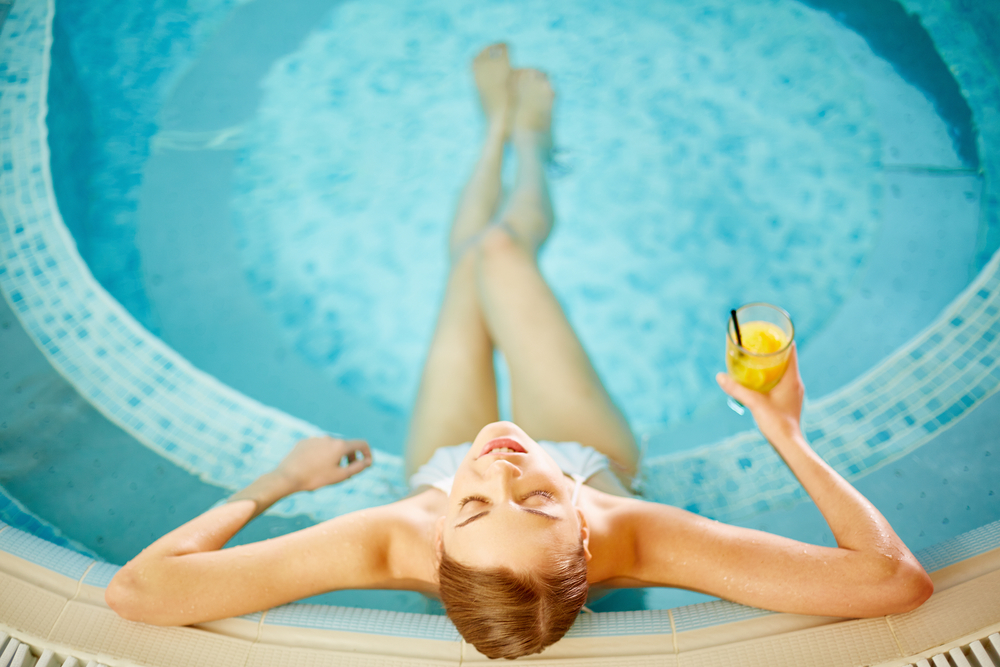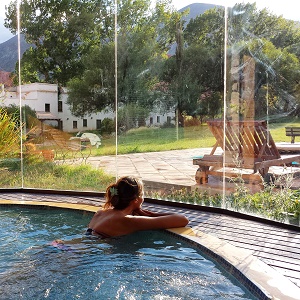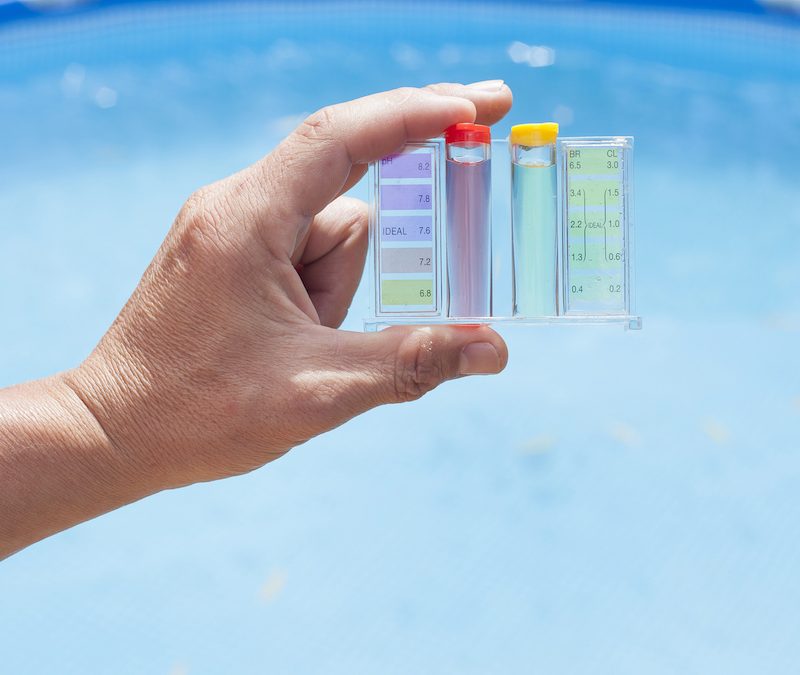Bbbrrrr it’s chilly. Perhaps there is snow on the ground and you’re in the house just longing for summer. If you have a hot tub or a spa, you have a summer-like spot right in your backyard! Think back to the first time you slid into the heated, jetted water of your hot tub. Aaaahhhh.
A hot tub or spa soak brings with it a break from the stresses of the day, a way to relax and unwind and an area to get the chill out of your weary bones. Many hot tub owners don’t use their hot tubs and spas as much in the summer months as they do in the winter, and when they go out to open the cover for that first soak, they notice the water doesn’t look as clean and clear and they get a whiff of the unmistakable scent of chlorine. If the water is cloudy or even smelly… there goes your hot tub soak, right?
If you’ve been a DIY-er when it comes to taking care of your hot tub or spa water you’re probably going to pull out the manual, grab the water test kit and try to determine what went wrong. Initially, our thought is that the water had been neglected. Even if you’re not using the hot tub regularly the water would need to be cleaned and maintained and the jets and filters run to keep the water circulating. Standing water can become stagnant, non-usable water.
How To Assure Your Hot Tub Water Is Ready For Your Soak
 Before you panic, let us just give you a quick pool and spa 101 lesson:
Before you panic, let us just give you a quick pool and spa 101 lesson:
- The main difference between a hot tub and a swimming pool is the volume of water. We know this is obvious, but because of the volume of water the need for chemicals and care varies.
- The temperature of the water also plays a factor. Bacteria grows faster in heated water than it does in the cool waters of the swimming pool. Your swimming pool temperature likely averages between 82-84 degrees F, unless you use a pool water heater. The water in a spa usually averages between 102-104 F. The heated water makes for a comfortable soak, but it also is a more welcoming breeding ground for bacteria and microorganisms.
What you need to do to keep the hot tub or spa water maintained
Take in the differences between how you might care for your swimming pool and remember the spa water chemistry is different for the hot tub or spa because of the heated water.
Another thing you need to remember is that the volume of water brings another set of challenges when it comes to water chemistry. You can certainly DIY your hot tub or spa water chemistry, but you may want to talk with your swimming pool service contractor to gain a better understanding of how to treat the hot tub water. The amount and type of chemicals and chemistry you need to use to keep your hot tub water usable varies from the pool. It’s like Goldilocks and the Three Bears — you need to get the water chemistry just right: too low and the water will be bacteria-filled, too much and your skin will be dry, itchy and red.
Here are some of the items that impact hot tub and spa water chemistry
- Sanitization. For the most part, chlorine is the go-to for water sanitization. These chemicals disinfect the water. Too much and it can make it uncomfortable, or even unhealthy to soak in. Too much and you will experience dry skin and red, itchy eyes. Too little and the spa will become a favorable breeding ground for harmful bacteria. The most common sanitizers are: Bromine and chlorine. Keep the readings between 1.5 and 3.0 PPM for chlorine and 3.0 and 5.0 PPM for bromine. You will find these readings when you test the water chemistry with your test kit. Scoop water into the test kit and let it sit for a few minutes to allow the sanitizer to get an accurate reading.
- pH levels. You test the pH in the hot tub water by using test strips you can get from your pool contractor. The ideal pH levels should be between 7.2 and 7.8 PPM. Low pH levels mean the water is acidic and that can corrode hot tub equipment and plumbing and make your eyes red and sore. Too high pH means the water is too alkaline and that leads to cloudy water and makes the spa filter work harder.
- Alkalinity levels are, in essence, the number of alkaline components in the spa water. When the water is too alkaline you will experience red eyes and dry itchy skin and again, too much or too little of any chemical or unbalanced chemistry can damage pool equipment.
- Calcium hardness. If you’re like most pool and hot tub owners you fill the hot tub or pool from the hose using the tap water. If your tap water is considered “hard” this means the water has high levels of certain minerals: calcium, iron and magnesium. When you use hard tap water to fill the spa you may see scale formation on the surface of the spa and if the calcium hardness in the water isn’t treated the water will be cloudy. Calcium readings should be between 100-250 PPM for acrylic finished hot tubs and 250-450 PPM for plaster spas.
What can you do if the hot tub chemistry is not in line?
 Shock it
Shock it
A shock treatment, or super chlorination, of a hot tub or spa is when a concentrated and copious amount of bromine or chlorine is dumped into the water. When you super chlorinate the sanitizer will break down all of those agents in the water that are “unfilterable” — these include:
- Soap film
- Hair spray
- Lotions and oils
- Deodorant
- Dead skin cells and more
If these agents aren’t cleared out they serve as a food source for algae and bacteria.
When the hot tub or spa is shocked, you need to leave the cover off of the pool so the fumes do not build up in the concentrated space between the surface of the water and the cover. If the cover is on it can corrode the spa cover and the fumes could be dangerous when released.
Getting ready to use the hot tub or spa?
Check the water chemistry a day or hours before you want to take a soak. You don’t want to don your swimsuit, grab your towels and head to the hot tub only to find out the water isn’t as welcoming as you’d hoped. Check the water chemistry regularly, run the jets and filter and pump regularly. If you’re not sure how to get the water chemistry back in balance, give your hot tub or pool service maintenance contractor a call. Let him help and show you how to keep the chemistry balanced.

